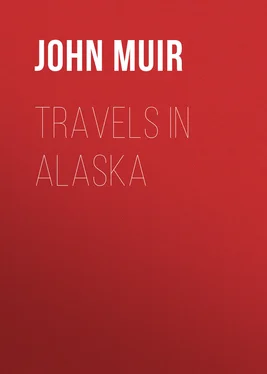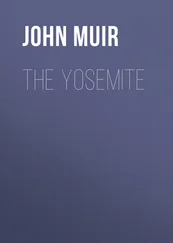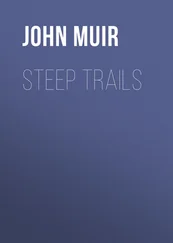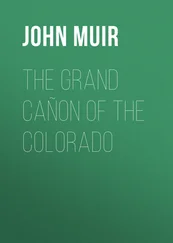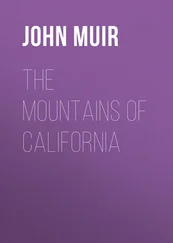John Muir - Travels in Alaska
Здесь есть возможность читать онлайн «John Muir - Travels in Alaska» — ознакомительный отрывок электронной книги совершенно бесплатно, а после прочтения отрывка купить полную версию. В некоторых случаях можно слушать аудио, скачать через торрент в формате fb2 и присутствует краткое содержание. Жанр: Путешествия и география, История, foreign_edu, foreign_antique, foreign_prose, на английском языке. Описание произведения, (предисловие) а так же отзывы посетителей доступны на портале библиотеки ЛибКат.
- Название:Travels in Alaska
- Автор:
- Жанр:
- Год:неизвестен
- ISBN:нет данных
- Рейтинг книги:4 / 5. Голосов: 1
-
Избранное:Добавить в избранное
- Отзывы:
-
Ваша оценка:
- 80
- 1
- 2
- 3
- 4
- 5
Travels in Alaska: краткое содержание, описание и аннотация
Предлагаем к чтению аннотацию, описание, краткое содержание или предисловие (зависит от того, что написал сам автор книги «Travels in Alaska»). Если вы не нашли необходимую информацию о книге — напишите в комментариях, мы постараемся отыскать её.
Travels in Alaska — читать онлайн ознакомительный отрывок
Ниже представлен текст книги, разбитый по страницам. Система сохранения места последней прочитанной страницы, позволяет с удобством читать онлайн бесплатно книгу «Travels in Alaska», без необходимости каждый раз заново искать на чём Вы остановились. Поставьте закладку, и сможете в любой момент перейти на страницу, на которой закончили чтение.
Интервал:
Закладка:
While I was at Wrangell the chiefs and head men of the Stickeen tribe got up a grand dinner and entertainment in honor of their distinguished visitors, three doctors of divinity and their wives, fellow passengers on the steamer with me, whose object was to organize the Presbyterian church. To both the dinner and dances I was invited, was adopted by the Stickeen tribe, and given an Indian name (Ancoutahan) said to mean adopted chief. I was inclined to regard this honor as being unlikely to have any practical value, but I was assured by Mr. Vanderbilt, Mr. Young, and others that it would be a great safeguard while I was on my travels among the different tribes of the archipelago. For travelers without an Indian name might be killed and robbed without the offender being called to account as long as the crime was kept secret from the whites; but, being adopted by the Stickeens, no one belonging to the other tribes would dare attack me, knowing that the Stickeens would hold them responsible.
The dinner-tables were tastefully decorated with flowers, and the food and general arrangements were in good taste, but there was no trace of Indian dishes. It was mostly imported canned stuff served Boston fashion. After the dinner we assembled in Chief Shakes's large block-house and were entertained with lively examples of their dances and amusements, carried on with great spirit, making a very novel barbarous durbar. The dances seemed to me wonderfully like those of the American Indians in general, a monotonous stamping accompanied by hand-clapping, head-jerking, and explosive grunts kept in time to grim drum-beats. The chief dancer and leader scattered great quantities of downy feathers like a snowstorm as blessings on everybody, while all chanted, “Hee-ee-ah-ah, hee-ee-ah-ah,” jumping up and down until all were bathed in perspiration.
After the dancing excellent imitations were given of the gait, gestures, and behavior of several animals under different circumstances–walking, hunting, capturing, and devouring their prey, etc. While all were quietly seated, waiting to see what next was going to happen, the door of the big house was suddenly thrown open and in bounced a bear, so true to life in form and gestures we were all startled, though it was only a bear-skin nicely fitted on a man who was intimately acquainted with the animals and knew how to imitate them. The bear shuffled down into the middle of the floor and made the motion of jumping into a stream and catching a wooden salmon that was ready for him, carrying it out on to the bank, throwing his head around to listen and see if any one was coming, then tearing it to pieces, jerking his head from side to side, looking and listening in fear of hunters' rifles. Besides the bear dance, there were porpoise and deer dances with one of the party imitating the animals by stuffed specimens with an Indian inside, and the movements were so accurately imitated that they seemed the real thing.
These animal plays were followed by serious speeches, interpreted by an Indian woman: “Dear Brothers and Sisters, this is the way we used to dance. We liked it long ago when we were blind, we always danced this way, but now we are not blind. The Good Lord has taken pity upon us and sent his son, Jesus Christ, to tell us what to do. We have danced to-day only to show you how blind we were to like to dance in this foolish way. We will not dance any more.”
Another speech was interpreted as follows: “‘Dear Brothers and Sisters,’ the chief says, ‘this is else way we used to dance and play. We do not wish to do so any more. We will give away all the dance dresses you have seen us wearing, though we value them very highly.’ He says he feels much honored to have so many white brothers and sisters at our dinner and plays.”
Several short explanatory remarks were made all through the exercises by Chief Shakes, presiding with grave dignity. The last of his speeches concluded thus: “Dear Brothers and Sisters, we have been long, long in the dark. You have led us into strong guiding light and taught us the right way to live and the right way to die. I thank you for myself and all my people, and I give you my heart.”
At the close of the amusements there was a potlatch when robes made of the skins of deer, wild sheep, marmots, and sables were distributed, and many of the fantastic head-dresses that had been worn by Shamans. One of these fell to my share.
The floor of the house was strewn with fresh hemlock boughs, bunches of showy wild flowers adorned the walls, and the hearth was filled with huckleberry branches and epilobium. Altogether it was a wonderful show.
I have found southeastern Alaska a good, healthy country to live in. The climate of the islands and shores of the mainland is remarkably bland and temperate and free from extremes of either heat or cold throughout the year. It is rainy, however,–so much so that hay-making will hardly ever be extensively engaged in here, whatever the future may show in the way of the development of mines, forests, and fisheries. This rainy weather, however, is of good quality, the best of the kind I ever experienced, mild in temperature, mostly gentle in its fall, filling the fountains of the rivers and keeping the whole land fresh and fruitful, while anything more delightful than the shining weather in the midst of the rain, the great round sun-days of July and August, may hardly be found anywhere, north or south. An Alaska summer day is a day without night. In the Far North, at Point Barrow, the sun does not set for weeks, and even here in southeastern Alaska it is only a few degrees below the horizon at its lowest point, and the topmost colors of the sunset blend with those of the sunrise, leaving no gap of darkness between. Midnight is only a low noon, the middle point of the gloaming. The thin clouds that are almost always present are then colored yellow and red, making a striking advertisement of the sun's progress beneath the horizon. The day opens slowly. The low arc of light steals around to the northeastward with gradual increase of height and span and intensity of tone; and when at length the sun appears, it is without much of that stirring, impressive pomp, of flashing, awakening, triumphant energy, suggestive of the Bible imagery, a bridegroom coming out of his chamber and rejoicing like a strong man to run a race. The red clouds with yellow edges dissolve in hazy dimness; the islands, with grayish-white ruffs of mist about them, cast ill-defined shadows on the glistening waters, and the whole down-bending firmament becomes pearl-gray. For three or four hours after sunrise there is nothing especially impressive in the landscape. The sun, though seemingly unclouded, may almost be looked in the face, and the islands and mountains, with their wealth of woods and snow and varied beauty of architecture, seem comparatively sleepy and uncommunicative.
As the day advances toward high noon, the sun-flood streaming through the damp atmosphere lights the water levels and the sky to glowing silver. Brightly play the ripples about the bushy edges of the islands and on the plume-shaped streaks between them, ruffled by gentle passing wind-currents. The warm air throbs and makes itself felt as a life-giving, energizing ocean, embracing all the landscape, quickening the imagination, and bringing to mind the life and motion about us–the tides, the rivers, the flood of light streaming through the satiny sky; the marvelous abundance of fishes feeding in the lower ocean; the misty flocks of insects in the air; wild sheep and goats on a thousand grassy ridges; beaver and mink far back on many a rushing stream; Indians floating and basking along the shores; leaves and crystals drinking the sunbeams; and glaciers on the mountains, making valleys and basins for new rivers and lakes and fertile beds of soil.
Through the afternoon, all the way down to the sunset, the day grows in beauty. The light seems to thicken and become yet more generously fruitful without losing its soft mellow brightness. Everything seems to settle into conscious repose. The winds breathe gently or are wholly at rest. The few clouds visible are downy and luminous and combed out fine on the edges. Gulls here and there, winnowing the air on easy wing, are brought into striking relief; and every stroke of the paddles of Indian hunters in their canoes is told by a quick, glancing flash. Bird choirs in the grove are scarce heard as they sweeten the brooding stillness; and the sky, land, and water meet and blend in one inseparable scene of enchantment. Then comes the sunset with its purple and gold, not a narrow arch on the horizon, but oftentimes filling all the sky. The level cloud-bars usually present are fired on the edges, and the spaces of clear sky between them are greenish-yellow or pale amber, while the orderly flocks of small overlapping clouds, often seen higher up, are mostly touched with crimson like the out-leaning sprays of maple-groves in the beginning of an Eastern Indian Summer. Soft, mellow purple flushes the sky to the zenith and fills the air, fairly steeping and transfiguring the islands and making all the water look like wine. After the sun goes down, the glowing gold vanishes, but because it descends on a curve nearly in the same plane with the horizon, the glowing portion of the display lasts much longer than in more southern latitudes, while the upper colors with gradually lessening intensity of tone sweep around to the north, gradually increase to the eastward, and unite with those of the morning.
Читать дальшеИнтервал:
Закладка:
Похожие книги на «Travels in Alaska»
Представляем Вашему вниманию похожие книги на «Travels in Alaska» списком для выбора. Мы отобрали схожую по названию и смыслу литературу в надежде предоставить читателям больше вариантов отыскать новые, интересные, ещё непрочитанные произведения.
Обсуждение, отзывы о книге «Travels in Alaska» и просто собственные мнения читателей. Оставьте ваши комментарии, напишите, что Вы думаете о произведении, его смысле или главных героях. Укажите что конкретно понравилось, а что нет, и почему Вы так считаете.
